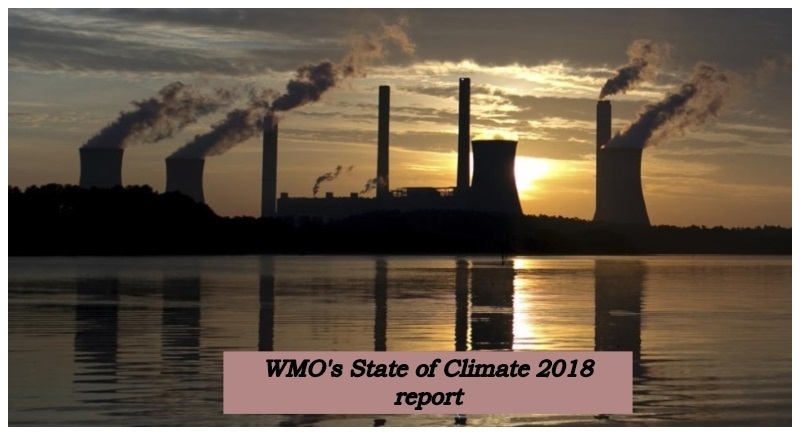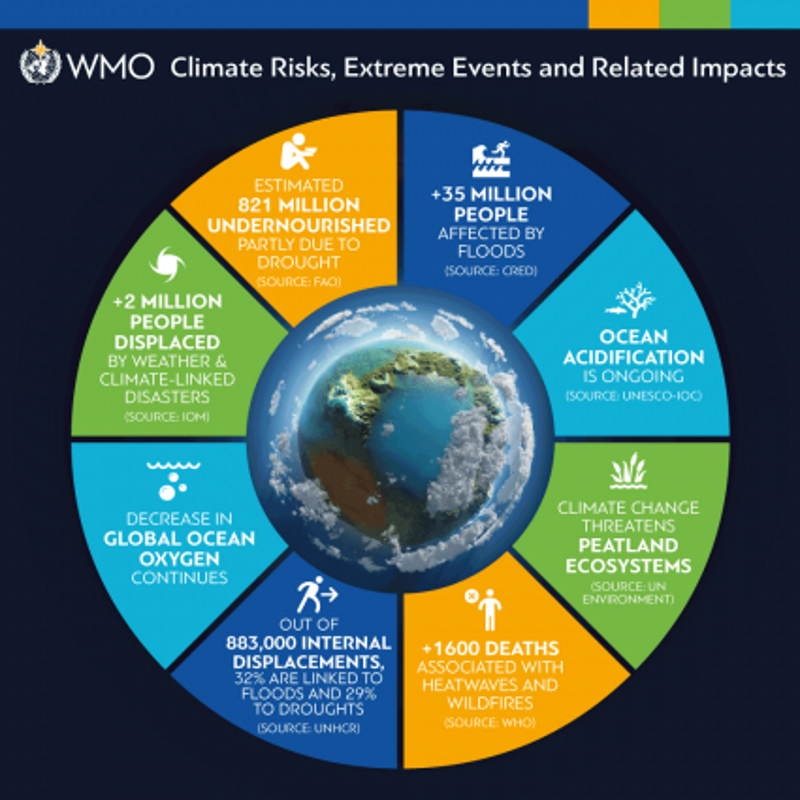Don’t come with speech, Come with plans, UN Chief appeals to world leaders as WMO issues ‘State of Climate’ report

United Nations, Mar 29: “Climate change is making extreme weather events more frequent & severe. The recent Cyclone Idai is a stark example. WMO’s new State of Climate report is yet another wake-up call for ambitious & urgent ClimateAction”, said UN Secretary-General Antonio Guterres on the launch of WMO’s “State of the Global Climate” in 2018.
Antonio Guterres said, “Climate change is happening now and to all of us. Every week brings a new example of climate-related devastation in every part of the world”.
The WMO Statement on the State of the Global Climate report formally launched at a joint press conference with UN Secretary-General António Guterres, UN General Assembly President María Fernanda Espinosa Garcés and WMO Secretary-General Petteri Taalas at United Nations headquarters in New York yesterday. It coincides with a high-level meeting on Climate and Sustainable Development for All.
The physical signs and socio-economic impacts of climate change are accelerating as record greenhouse gas concentrations drive global temperatures towards increasingly dangerous levels, according to a new report from the World Meteorological Organization.
The WMO Statement on the State of the Global Climate in 2018, its 25th-anniversary edition, highlights record sea level rise, as well as exceptionally high land and ocean temperatures over the past four years. This warming trend has lasted since the start of this century and is expected to continue.
“Since the Statement was first published, climate science has achieved an unprecedented degree of robustness, providing authoritative evidence of global temperature increase and associated features such as accelerating sea level rise, shrinking sea ice, glacier retreat and extreme events such as heat waves,” said WMO Secretary-General Petteri Taalas.
On the launch of the report, UNGA President Maria Fernanda Espinosa said, “clearly, we need to modify our consumption patterns. This is not just a world of shortages, also of over-consumption”.
These key climate change indicators are becoming more pronounced. Carbon dioxide levels, which were at 357.0 parts per million when the statement was first published in 1994, keep rising – to 405.5 parts per million in 2017. For 2018 and 2019, greenhouse gas concentrations are expected to increase further.

The WMO climate statement includes input from national meteorological and hydrological services, an extensive community of scientific experts, and United Nations agencies. It details climate-related risks and impacts on human health and welfare, migration and displacement, food security, the environment and ocean, and land-based ecosystems. It also catalogs extreme weather around the world.
“The data released in this report give cause for great concern. The past four years were the warmest on record, with the global average surface temperature in 2018 approximately 1°C above the pre-industrial baseline,” Mr. Guterres wrote in the report.
“These data confirm the urgency of climate action. This was also emphasized by the recent Intergovernmental Panel on Climate Change (IPCC) special report on the impacts of global warming of 1.5°C. The IPCC found that limiting global warming to 1.5°C will require rapid and far-reaching transitions in land, energy, industry, buildings, transport, and cities and that global net human-caused emissions of carbon dioxide need to fall by about 45% from 2010 levels by 2030, reaching net zero around 2050,” wrote Mr Guterres.